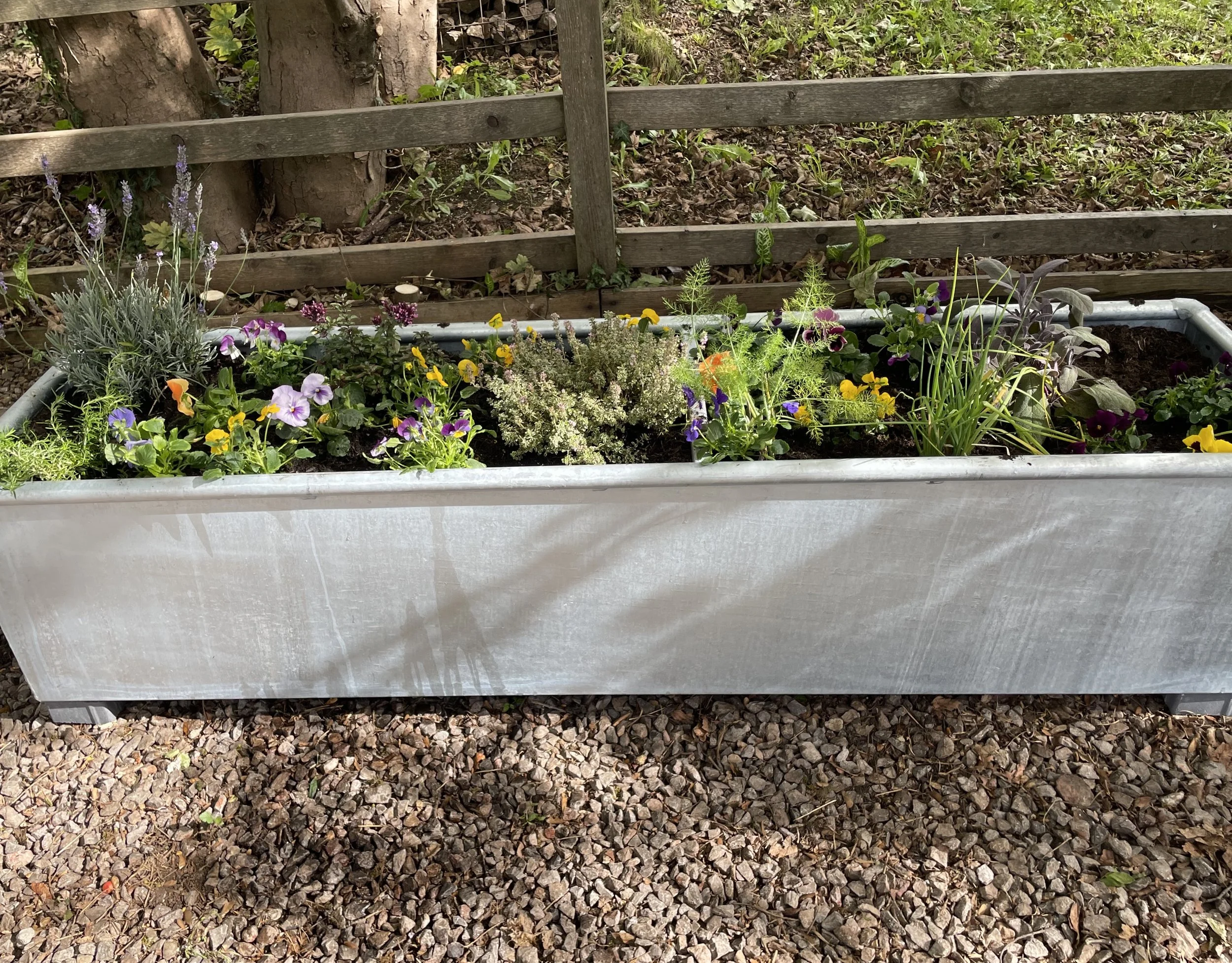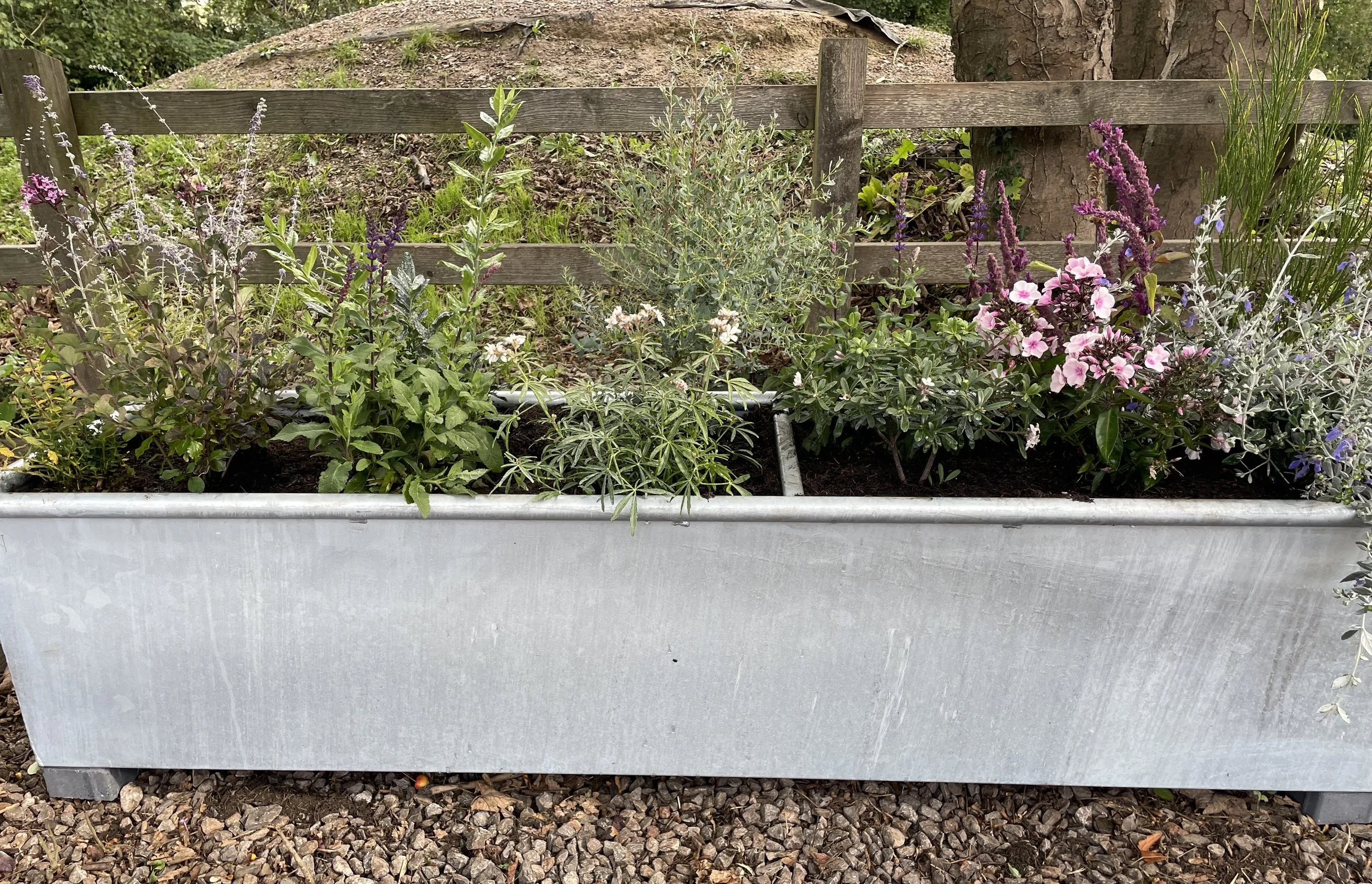
The Nunney Parish Council Sensory Garden Experience
Welcome to the Sensory Garden Experience & Treasure Hunt!
We hope the Sensory Garden Experience will entice young children and their families to come spend time outside exploring all five senses in the beautiful, magical and wild area that is our Old Quarry Gardens.
The Experience consists of five beautiful troughs, carefully selected with our pollinator friends in mind – bees, butterflies, lady birds and more. We worked with Barters Farm Nurseries Ltd and their amazing Sensory Curator, Ann Evans, who purposefully chose indigenous and non-indigenous species to the UK as we watch our season boundaries change and the climate getting hotter than we’re used to experiencing. The troughs are designed to keep pollinators happy year-round as well as touch on every sense you have, including your Sixth Sense (but we’ll talk more about that later!).
The treasure hunt will be a permanent work in progress, growing and changing over time. We're starting it with:
Our Metasequoia glyptostroboides feathery Redwood Tree.
Our Secret Tunnel aka the Dragon's Lair - which has currently been taken over by the Fairies of Nunney Never Never Land! Can you find them?
Our ever expanding Mint Mountain which often has Robins frolicking around it.
Our New Willow Archway (coming February 7th, 2026) that is leading directly into the...
Exploratory Woodlands, where it would be nearly impossible NOT to find a doorway into Nunney Never Never Land along this charming Fairy Trail.
And, we're curious...have you found your Sixth Sense yet? If not, maybe start off by going through the Old Willow Archway to find the bench on the other side of the pond.
We thank you for visiting our Sensory Garden Experience today and want to give a huge thank you to those involved in making it happen, including SALC, Somerset's Health & Wellness grant, but most especially to Annmarie Sweet for her endless enthusiasm, ideas and drive for helping to make this happen. We hope you enjoy yourself.
- Nunney Parish Council
Sight
Sight is one of the most complex senses. The eyes and brain work in tandem with nerves to process depth, light, colour and imagery. Sight is another way of taking in data to inform how we perceive the world to make decisions about our environment, our movement, and our social interactions.
Sound
The sense of sound is possibly one of our more complex senses and operates largely on vibrations. Not the Om kind, but through our body’s ability to interpret sound waves through the ear and our nervous system operated by, you guessed it, our brains! There are very tiny bones in the middle of the ear that help not only to hear, but also to keep our equilibrium, our balance, and to help us maintain awareness of our environment as well as communicate.
Taste
The sense of taste is specific to the sensation detected by our taste buds of the five basic tastes of sweet, sour, salty, bitter and umami. Taste is important because it allows us to determine if food is safe to eat. Also, maybe less true in today’s world of fast and overly processed food, it has historically enabled us to distinguish whether something is nutritious and will provide our bodies with the sustenance it requires to thrive.
Smell
The sense of smell is powerful – some say the most powerful sense we have as it is strongly linked to our emotions and memory. It works by detecting odours that are picked up by tiny sensory cells in your mouth and nose. Your brain then interprets the incoming data and links it to hazards, memories, emotions, food and many other things.
Touch
Touch allows us to perceive the world through direct skin contact that delivers information to the brain such as pain, pressure and vibration. These notifications allow us to make choices about our emotions and safety. Touch enables us to interact with our environment and develop emotional bonds. Our nerves in the skin are connected to proprioceptors in our muscles and joints which enable us to maintain body awareness that allows for mobility and coordination. The earliest days of our human cognitive and emotional development are based on sensing the world through touch.





